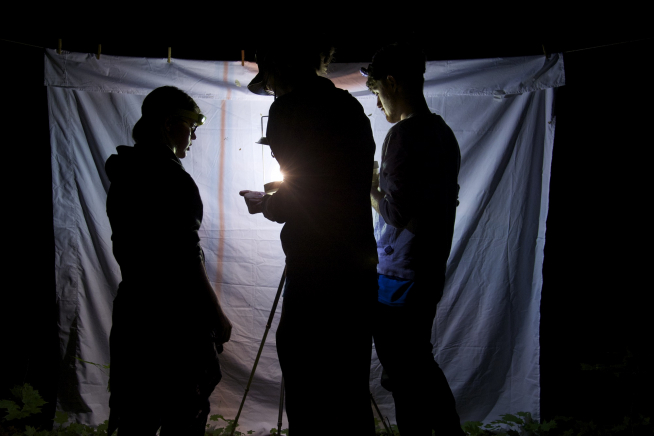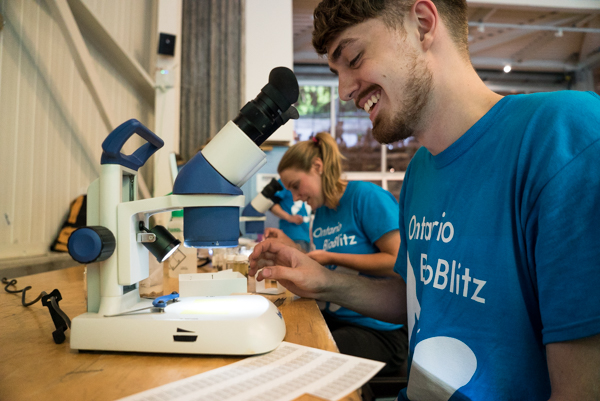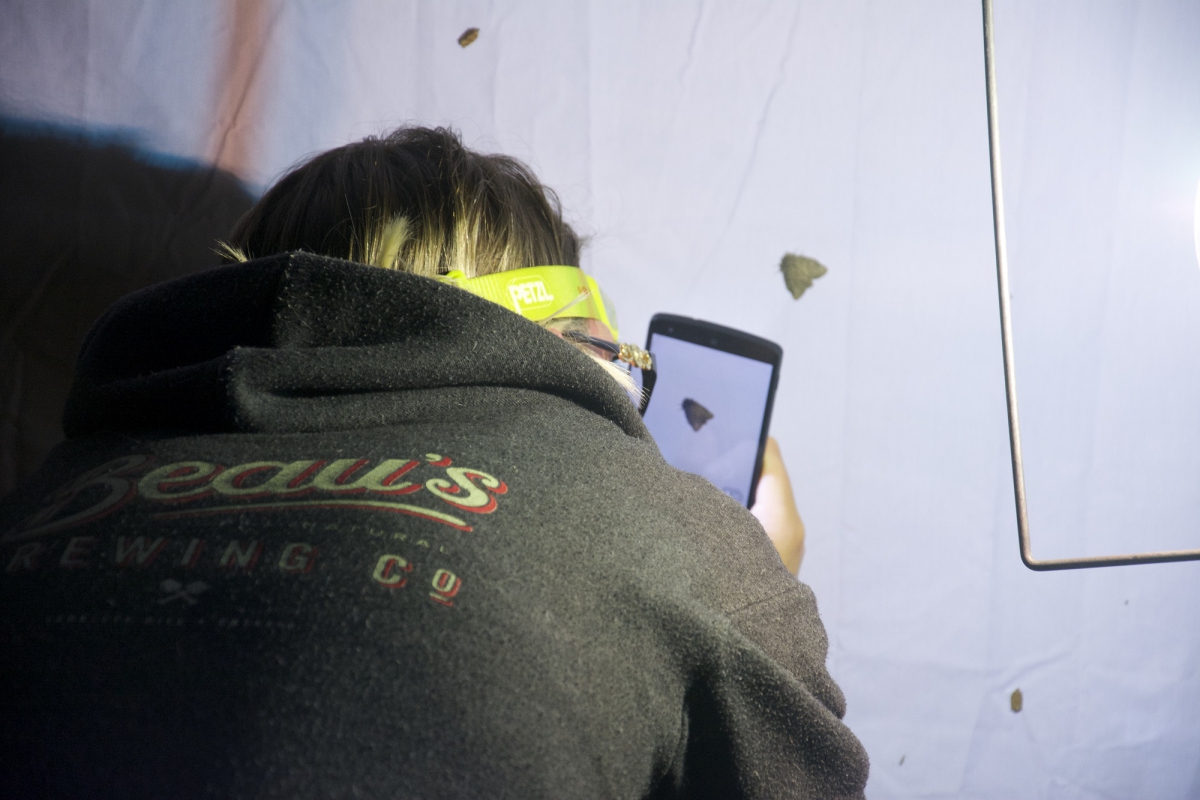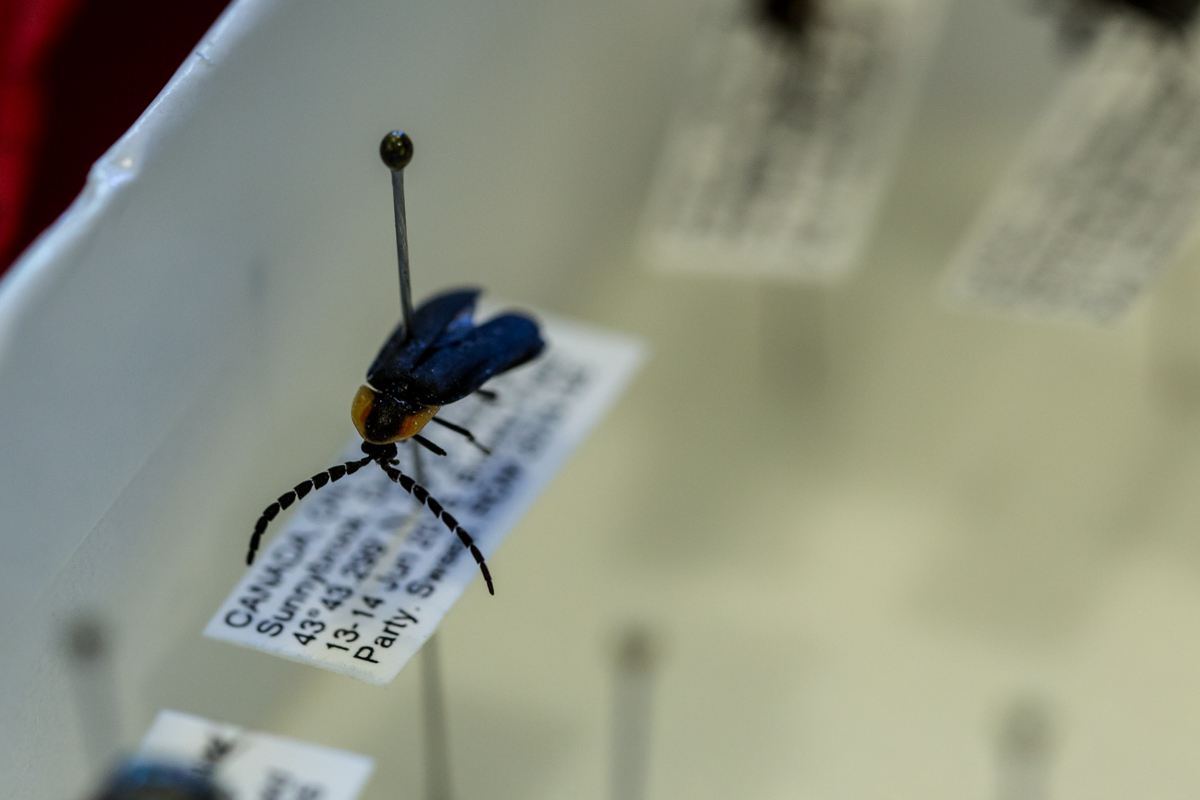Bug Hunting with Bed Sheets

Blog by ROM Schad Gallery Summer Assistant, Roegan Vetro
Why would a couple of insect-keen naturalists lug a car battery, a mercury vapour lamp and a white bed sheet into a forest around midnight? If you guessed “to prepare for a whimsical, late-night shadow puppet show”, you may not be familiar with the sheer amount of passion entomologists have for their study subjects. Rather than trying to entertain a human audience, entomologists set up what’s known as a ‘light trap’ to attract bugs! During the 2015 Ontario BioBlitz, I had the opportunity to discover how these work with the ROM’s Senior Curator of Entomology, Chris Darling.


To set the light trap, we simply hung the bed sheet up in a small forest clearing and assembled the lamp in front of it. It only takes a minute or two after turning on the lamp before some winged visitors arrive; wait a bit longer and the rest come in droves, like literal moths to a flame (or to an arc of electricity passing through vapourized mercury, in this case). Moths of various shapes and sizes were among the first and the most numerous insects on the scene. To my surprise this included a large hawk-moth (my first time ever seeing one!). Also drawn to the light were several kinds of parasitic wasps, long-legged crane flies, brilliant metallic scarab beetles, and even a firefly. It was an incredible experience (though perhaps a nightmare for some) to have more bugs than you can easily count flitting and crawling all around you, and sometimes using your arms, head and shoulders as a convenient perch!

We managed to collect quite a few specimens from the light trap, which are currently awaiting formal identification back at the ROM. Even at a glance however it’s apparent the variety of insects we caught was pretty substantial. Being able to assess the level of biodiversity in a given area is so important for many reasons, and becomes especially pertinent when we need to evaluate how human activity is shaping biodiversity over time. This is why programs like the BioBlitz are integral first steps to learning how we can better manage our own impacts on biodiversity, while encouraging and empowering people to get involved with nature and their local community. This years’ Don River Watershed BioBlitz was a huge success with a massive turnout, and I’m already eager to discover what next year’s BioBlitz of the Credit River Watershed has in store!

Want to participate in a BioBlitz this summer? It’s not too late. Find one near you here
